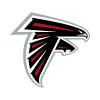Debrief: 32 thoughts for 32 teams after the 2024 NFL Draft
- Winners and losers: Round 1
- Day 2
- 32 thoughts for 32 teams
After the conclusion of the 2024 NFL Draft, here are 32 thoughts on 32 teams. This should be self-explanatory.

Fourth overall pick Marvin Harrison Jr. gives the Cardinals offense a chance. They still could be short at receiver, but don’t forget that Michael Wilson enjoyed an underrated rookie season in 2023. The offensive line is in good shape, and offensive coordinator Drew Petzing showed promise in his first year on the job last season. While the rest of the names the Cardinals drafted weren’t as splashy as Harrison, the team was the first since Dallas in 1991 to draft seven players in the top 90. After a strong rookie crop of instant contributors in 2023, this class could supercharge the Cardinals’ reboot in the brutally competitive NFC West.
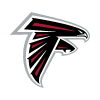
I defended the apparent process behind the Falcons’ selection of Michael Penix Jr. exhaustively on the Around the NFL Podcast. To me, it boils down to the idea that it’s almost impossible to devote too many resources to quarterback, because the potential payoff is so huge. I’m not confident Penix will be a top-10 quarterback, but clearly, the Falcons saw him that way. Even if he’s a backup quarterback for two or three years before Kirk Cousins gives way, quality backup quarterbacks may be the most undervalued group in sports. Imagine if the Vikings — or Falcons — had a quality backup last year. The hope, of course, is that Penix provides starting value at the scarcest position for a decade, starting in 2026 or 2027. But he’s not useless in the meantime, especially given the uncertainty that comes with a soon-to-be 36-year-old starter coming off an Achilles tear.

It’s foolish to ever question the Ravens’ team-building process. That said, they had a lot of needs that couldn’t be met with one draft. Their top two picks, cornerback Nate Wiggins (No. 30 overall) and tackle Roger Rosengarten (No. 62), probably need to play right away because of depth-chart shortcomings. There’s room for a few of the Ravens’ patented summertime free agency signings to contribute immediately along the defensive line, at linebacker and possibly at wideout.

No. 33 overall pick Keon Coleman profiles as a “Power Slot” receiver for Buffalo. That’s an interesting fit on this team, given that most of the Bills’ pass catchers (Khalil Shakir, Dalton Kincaid, Curtis Samuel) do their best work over the middle of the field. Odell Beckham Jr. would be a good fit as a role player here.

New Panthers wideout Xavier Legette (No. 32 overall) is a physical specimen, a player who makes you say wow when he’s running in the open field. He’s not much of a route runner or a separator, which is a concern because that makes him similar to the Panthers’ second-round pick in 2023, Jonathan Mingo, who finished his rookie year with zero touchdown catches and less than 500 receiving yards. The Panthers are clearly hopeful that new coach Dave Canales and his scheme can create separation while Legette improves at the pro level. Bryce Young should appreciate that the team added two explosive teammates: running back Jonathan Brooks (No. 46) and tight end Ja’Tavion Sanders (No. 101).

I have never been more excited for the NFL to schedule the Bears in prime time. They are the biggest winners in the draft, and anyone who says otherwise is trying to be too cute. They walked away with the best quarterback prospect since Andrew Luck (Caleb Williams, No. 1 overall) and a receiver with no holes (Rome Odunze, No. 9), someone who would have been WR1 in most years. Their third-round pick, tackle Kiran Amegadjie out of Yale (No. 75), was a Bears fan growing up and has the relatable tweets to prove it. Those types of anguished reactions might finally be a thing of the past in Chicago.

The Cincinnati Bengals have a type at tackle. Adding 6-foot-8, 340-pound pass protector Amarius Mims (pick No. 18 overall) to a group that already includes Trent Brown (6-8, 370) and Orlando Brown (6-8, 345) will help make this the biggest boom-or-bust unit in football. Mims barely played in college but has top-five traits. Trent Brown changes an entire offense when he’s right, but he’s had a rollercoaster career.
I love the long-term investment in Joe Burrow‘s protection and the idea of Mims not having to start Week 1. Tackle is a developmental position, perhaps as much as quarterback — to the extent that the receiver Cincinnati chose in Round 3 (Jermaine Burton, taken No. 80 overall) probably has a better chance to start in Week 1 than Mims does.
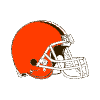
For the third consecutive year, the Browns didn’t have a first-round pick, thanks to the 2022 trade for Deshaun Watson — who was outplayed by a backup quarterback in each of his two seasons with Cleveland so far.

The Cowboys drafted Oklahoma tackle Tyler Guyton in the first round. He’s got every tool possible, but he was viewed as a player who would take time to develop. The state of the Cowboys’ current roster would indicate he needs to play right away. On the positive side, the trade down that they made before taking Guyton 29th overall allowed them to acquire an extra draft pick, a third-rounder they ended up using on interior lineman Cooper Beebe (No. 73).
I expected Dallas to similarly fill a direct need with a starting running back on Day 2 of the draft, but Jonathan Brooks — who, owner Jerry Jones said the night before, was “high, high, high” on the Cowboys’ draft board — was snatched up by the Panthers at No. 46, 10 spots above Dallas’ first Friday pick (No. 56 overall, used on edge Marshawn Kneeland). The team could roll with a rotation of Rico Dowdle, Deuce Vaughn and … current free agent Ezekiel Elliott?

Bo Nix is the first quarterback that a Sean Payton team has ever drafted in the first two rounds. Payton was infamously close to taking Patrick Mahomes in 2017 when Payton was coaching New Orleans — but the differences between Mahomes and Nix are stark. Nix struggled when pressured in college and doesn’t have an imposing skill set. He profiles as the type of player who usually gets taken in the third round, which is often where the sixth quarterback selected gets drafted. This year, the sixth quarterback was selected No. 12 overall.
Payton is incredible at maximizing quarterbacks, and I know I argued in favor of paying up for QBs in the Falcons’ blurb, but in this instance, it’s hard to imagine any other team valuing Nix so highly. The Broncos ignored other pressing needs to take him. Instead, they could have traded down to address those needs and still ended up with Nix. It’s worth wondering if Payton just set a ceiling on this Broncos era, even as he’s trying to get it off the ground.
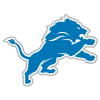
The Lions know how to attack issues head on. They entered the offseason with major questions at cornerback. First, they used a third-round pick to acquire Bucs corner Carlton Davis in March, then they selected Terrion Arnold and Ennis Rakestraw Jr. in the first two rounds of the draft. Even accounting for Detroit’s move up to take Arnold in Round 1, it was very surprising that either cornerback was available where general manager Brad Holmes found them (No. 24 and No. 61 overall).

At this point, Packers GM Brian Gutekunst and coach Matt LaFleur deserve the benefit of the doubt when it comes to the cohesion of their scouting and player development efforts. Tackle Jordan Morgan (No. 25 overall), linebacker Edgerrin Cooper (No. 45), safety Javon Bullard (No. 58) and running back MarShawn Lloyd (No. 88) all have a path to contributing as rookies, which could quietly give the Packers one of the more impactful rookie classes in football. Again.

In March, the Texans traded the No. 23 pick (and No. 232) to the Vikings for second- and sixth-round picks in 2024 and a second-rounder in 2025. That already paid off in the addition of Stefon Diggs, who was acquired from Buffalo in exchange for that 2025 choice. But in terms of the 2024 second-rounder (No. 42 overall), the board cruelly didn’t appear to set up in Houston’s favor. The Texans needed cornerback help and saw the Eagles and Saints trade in front of them to take first-round-caliber talents Cooper DeJean (No. 40) and Kool-Aid McKinstry (No. 41). The Texans wound up taking cornerback Kamari Lassiter from Georgia.
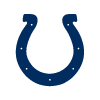
Laiatu Latu was my favorite pass rusher in the draft by far. The Colts apparently felt similarly. Snagging the first defensive player drafted at No. 15 overall was fantastic business for GM Chris Ballard, especially because of the depth of this receiver class. In the second round, Ballard picked up talented Texas wideout Adonai Mitchell (No. 52 overall), who has a chance to put 2022 second-round pick Alec Pierce on the bench sooner than later. As much as I liked Brian Thomas Jr. as a prospect, Latu and Mitchell make a better tandem than Thomas and any edge prospect that would have been there in the second round. Speaking of Thomas, though …

The Jaguars were one of the biggest winners of the first round. Brian Thomas Jr. has rare movement skills for a player of his size and speed. He could be a turbocharged version of Nico Collins for Trevor Lawrence. Thomas would have been a great pick at No. 17 overall, where the Jaguars were originally slotted, but Jacksonville took advantage of the Vikings’ apparent desperation to move up, grabbing valuable draft assets while still landing a potential future No. 1 wideout at No. 23. Jacksonville’s offense will be among the fastest in football, with Thomas joining Gabe Davis, Christian Kirk and Travis Etienne.

Xavier Worthy (No. 28 overall) has more to his game than straight-line speed. He was the true No. 1 wideout in Texas, over Adonai Mitchell, and he has more of an ability to make people miss with quickness and route running than most “track stars” typically do. When I watched Worthy before the draft, I thought that he’d absolutely ball out if he somehow landed with the Dolphins or the Chiefs. Yup.
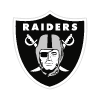
The Las Vegas Raiders had more pressing holes at quarterback and on defense, but GM Tom Telesco’s selection of tight end Brock Bowers at No. 13 overall makes sense. It’s a waste of energy for a new GM to make decisions based on what their predecessors did. Tight end Michael Mayer — picked in the second round last year by the previous regime — can still contribute as a starter in two-tight end sets, but Bowers was the last elite offensive weapon left in the draft. The Raiders need weapons, and the tight end tandem will open up their passing game and their rushing attack. The Raiders also need a quarterback, but Michael Penix Jr. going to the Falcons at No. 8 eliminated any reasonable chance for Las Vegas to take one early.

I’d be shocked if receiver Ladd McConkey (No. 34 overall) and linebacker Junior Colson (No. 69) didn’t each play over 750 snaps for the Chargers this season. McConkey’s likely availability atop Round 2 probably informed the Bolts’ selection of Joe Alt at No. 5 overall. Alt was one of the better tackle prospects in years, and there were no starter-caliber tackles left after Round 1. Even if McConkey is not going to be a No. 1 receiver as a pro, the drop-off at that position was far less steep than it was at tackle.

The Rams aren’t exactly in “F— them picks” mode anymore, although they did surrender a 2025 second-rounder (and a 2024 fifth-rounder) to move up 13 spots in Round 2 for Florida State defensive tackle Braden Fiske (No. 39 overall). That pairs Fiske with his teammate, first-round pick Jared Verse (No. 19). Between Fiske, Verse and running back Blake Corum (No. 83), the Rams are doubling down on rugged players who can excel in the running game on both sides of the ball.

Tennessee running back Jaylen Wright (No. 120) was one of the biggest fantasy winners on draft day, because he’s a track-star running back who was taken by Mike McDaniel’s Dolphins. Fast-forward to Week 14 of 2025, when Wright randomly runs for 217 yards and wins your fantasy playoff matchup for you.

The Minnesota Vikings apparently wanted to use a lot of draft resources to trade up for UNC quarterback Drake Maye — and instead, they wound up using a lot of draft resources to trade up for Alabama pass rusher Dallas Turner. NFL Network Insider Ian Rapoport reported during Round 1 that Minnesota continued to aggressively try to move up to No. 3 overall with the Patriots until late in the process, attempting to use their extra first-round pick, the No. 23 overall choice acquired from the Texans, to make it happen. It didn’t work. So the Vikings settled for a small trade up to take J.J. McCarthy at No. 10 overall. Fair enough.
The weirder part is how many assets they gave up to make Turner happen at No. 17 overall. Here’s what ultimately left the building in two trades made with Houston (to get to No. 23 in March) and Jacksonville (to get to No. 17 on Thursday):
- 2024 second-round pick (No. 42 overall)
- 2024 fifth-round pick (No. 167)
- 2024 sixth-round pick (No. 188)
- 2025 second-round pick
- 2025 third-round pick
- 2025 fourth-round pick
Turner was a fine prospect, even if I (and the Colts) liked Laiatu Latu better as a pass rusher. But that is a wild haul to give up for one swing at the plate.

The Patriots were smart to pass on trade offers for the No. 3 overall pick and use that selection to draft Drake Maye, an outrageously good quarterback talent who they were lucky fell to No. 3 overall. He’d go No. 1 overall most years!
The first five picks of the Jerod Mayo/Eliot Wolf era were on offense, including wideouts Ja’Lynn Polk (No. 37) and Javon Baker (No. 110). Receiver is a crowded position group; Demario Douglas is coming off a strong rookie season, while K.J. Osborn was signed in free agency and Kendrick Bourne and Jalen Reagor re-signed. JuJu Smith-Schuster, who is guaranteed $7 million, could be a cut candidate. 2022 second-rounder Tyquan Thornton is likely a goner.

The Saints had a productive draft, but the second-round selection of cornerback Kool-Aid McKinstry (No. 41 overall) raised immediate questions about Marshon Lattimore‘s future on the team. Even if Lattimore wasn’t dealt this weekend, it’s a situation to monitor. If Lattimore stays, coach Dennis Allen will enjoy how loaded the team is at cornerback.

Fourth-round pick Theo Johnson (No. 107 overall) was my second-favorite tight end in this class because of his athletic profile and movement skills. He provides some insurance for Darren Waller, who has been openly considering retirement. The Giants continue to seek juice for their offense despite passing on quarterbacks. J.J. McCarthy would have been a reach at No. 6 overall; it made sense to pass on drafting another potential Daniel Jones after they struck out on their attempt to trade up for Drake Maye, especially when a talent like Malik Nabers was on the board.

The last one-trick pony rookie receiver who could make explosive plays after the catch that Aaron Rodgers played with? Christian Watson. That worked out pretty well. So this is a perfect landing spot for Malachi Corley (No. 65 overall). It’s hard not to love this Jets offseason, a fine mix of addressing needs in an all-in year without mortgaging the future. Olu Fashanu absolutely made sense over a luxury pick like Brock Bowers at No. 11 overall, considering the age factor and injury risk the Jets face with their rostered tackles.

“Howie did it again!” It’s almost become cliché to praise Eagles GM Howie Roseman, but you can’t blame the man for the board falling to him so well. They got the top cornerback in the draft at No. 22 (Quinyon Mitchell) and then moved up for a first-round talent in Cooper DeJean at No. 40 overall. Having DeJean and Chauncey Gardner-Johnson in the same defensive backfield is going to give Philadelphia incredible versatility. New defensive coordinator Vic Fangio should know just how to use them.
The biggest move the Eagles made on draft weekend, however, was the extension handed to receiver A.J. Brown. The team has done an incredible job locking up its young talent for the next five years.

Taking three promising offensive linemen in the first four rounds and adding sneaky-good value picks at wide receiver (Roman Wilson, No. 84 overall) and linebacker (Payton Wilson, No. 98) in the third round made this the most “Steelers” draft possible. There needs to be development with these rookies and on the roster, but Pittsburgh has amassed a nice young core of players over the past few years.

It is not that hard to read between the lines of 49ers general manager John Lynch’s press conferences this week, especially when combined with NFL Network Insider Ian Rapoport’s reports about San Francisco’s receiver room. It was more likely that Deebo Samuel was going to get traded than Brandon Aiyuk. Neither happened by draft time, and now it sure looks like the 49ers will go into 2024 with both veterans, in addition to rookie slot receiver Ricky Pearsall (No. 31 overall) and underrated role player Jauan Jennings. My guess: Aiyuk is given a contract extension, and this winds up being Samuel’s last year with the 49ers.

The Seahawks have been attempting to rebuild their defensive line for a while. The addition of Byron Murphy II (No. 16 overall) along with the re-signing of Leonard Williams to play next to Dre’Mont Jones finally has the team in an enviable position. Seattle could still use more juice on the edge, but a healthy Uchenna Nwosu and Boye Mafe are a solid starting pair. I’ve got questions about their linebackers. Even so, new coach Mike Macdonald has plenty of weapons to deploy up front and throughout the secondary.

Bucs GM Jason Licht has been one of the more quietly effective drafters in football for a long time. Center Graham Barton (No. 26 overall; he can play other positions), edge Chris Braswell (No. 57), wideout Jalen McMillan (No. 92) and running back Bucky Irving (No. 125) all have a chance to make an immediate impact. This team has successfully avoided cratering following Tom Brady’s departure, a nifty trick, considering Brady’s contract and the older roster with which Tampa won the title in 2020.

It was surprising to see the Titans draft Texas defensive tackle T’Vondre Sweat at No. 38 overall after his recent DWI arrest. Even before that, the play-to-play consistency Sweat showed in games was a concern. Regardless, Sweat’s job at the next level will be to anchor down in the running game.

Jer’Zhan Newton was my favorite defensive player in the draft. Washington got him at No. 36 overall. Did he fall to the second round despite his top-15 talent because of a January surgery on his foot, which he says has fully healed? Either way, no defensive player more consistently won over the last two seasons. The Jayden Daniels pick at No. 2 overall is the one that will make or break this new regime, but Washington’s defense got a lot better, too, by adding Newton and Michigan’s do-everything slot corner Mike Sainristil (No. 50) in the second round.


